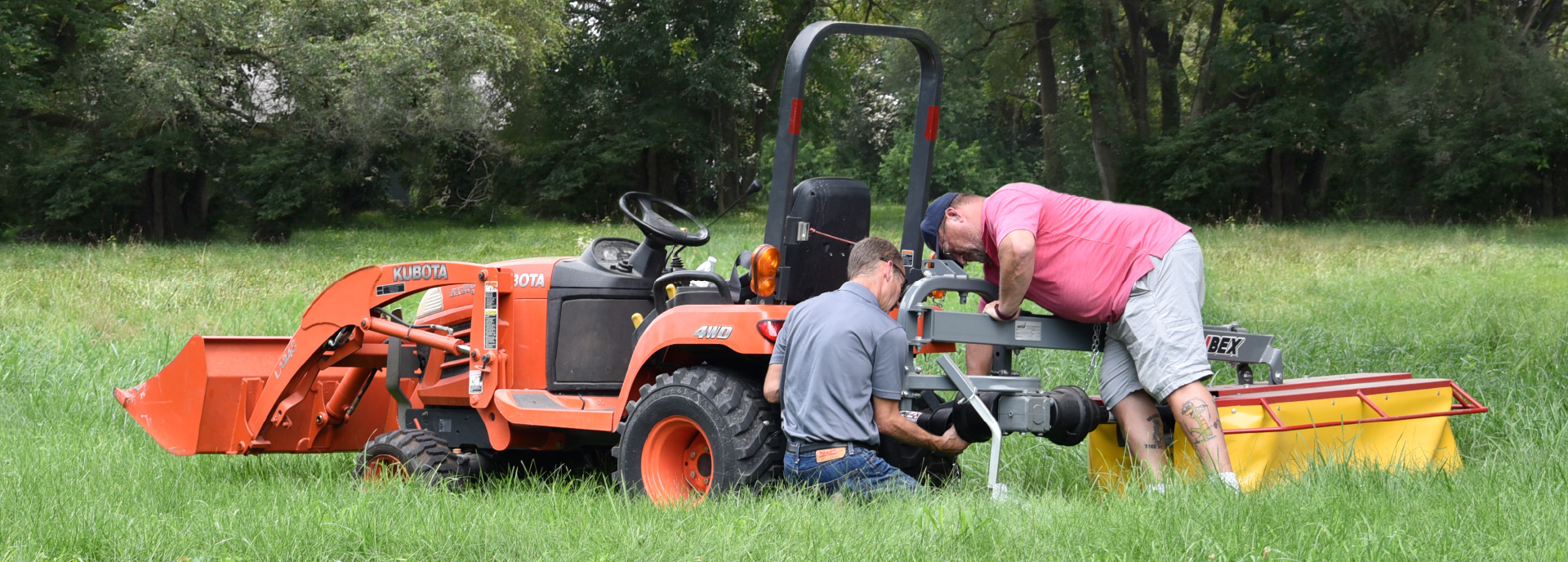In-Season Equipment Maintenance

As the old adage claims, prevention is worth a pound of cure. More applicably, in the world of hay production, prevention is worth pounds of curing hay--and the best way to prevent problems in the hay field is through regular maintenance of your equipment.
Several of our previous blogs have discussed maintenance to prepare for the hay season and maintenance to close out the hay season. This blog will provide a check list of maintenance that should be performed each time your equipment is used. Hay equipment is a valuable investment for small-farm operators. There is no better way to get the most out of that investment than by protecting it.
The following is a list of tasks that should be performed with each use of your mower, tedder, rake, or baler. Be sure to check your user manuals for any recommendations that pertain to your specific implements. You may find it handy to make a copy of this page and tack it to the wall of your equipment shed for easy reference.
Mower

- Check blades for damage or dullness--replace as necessary
- Make sure any blade bolts are tight
- Blow off--wet grasses contain moisture which can cause rust
- Lubricate
Tedder

- Check tines for damage/replace as necessary
- Blow off especially if used to rake wet hay
- Lubricate
- Check tire pressure
Rake

- Check belts for tightness or damage/replace or adjust as necessary
- Check tines for damage/replace as necessary
- Blow off especially if used to rake wet hay
- Lubricate
- Check tire pressure
Mini Round Baler

- Check net mechanism, replace roll if necessary
- Add twine as needed and tie end to existing roll
- Check all belts and chains for tightness or damage/replace or adjust as necessary
- Blow out pickup and inner chamber
- Lubricate
- Check tire pressure
- Reset bale counter
- Test rear door hydraulics
- Check pickup for tangled hay or pieces of twine
Square Baler

- Check twine mechanism/add rolls if necessary and tie to existing rolls
- Check all belts and chains for tightness or damage/replace or adjust as necessary
- Blow out pickup and inner chamber
- Lubricate
- Check tire pressure
- Reset bale counter
- Check pickup for tangled hay or pieces of twine
- Activate PTO at idle speed and inspect shear bolts and timing
Be sure to save time, save money, and save your sanity. Use this list to keep your baling equipment well-maintained and in top condition for whenever that week of perfect baling weather arrives! Happy baling!
Recent Posts
-
Best Front Loader Attachments for Your Kubota BX Series Tractor
If you own a Kubota BX-series compact tractor, you already know it’s a versatile machine — but p …Dec 30th 2025 -
Boost Pine Straw Production Efficiency with Ibex Mini Round Balers
At Tractor Tools Direct, we're known for our high-quality hay equipment tailored for small farms …Dec 8th 2025 -
How to Winterize Your Tractor: Essential Maintenance Tips to Protect Your Investment
Farm equipment is one of the most valuable investments a farmer can make. At Tractor Tools Direc …Dec 1st 2025



